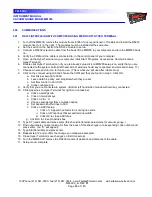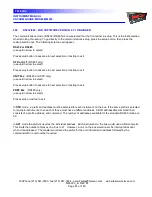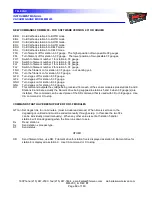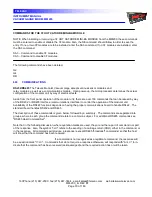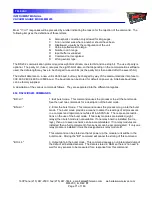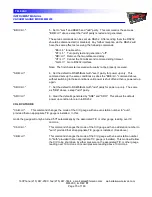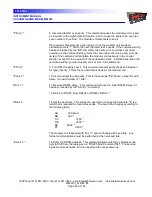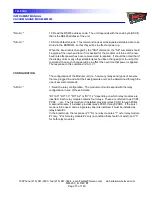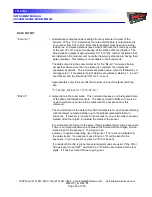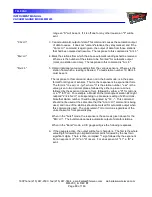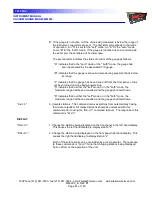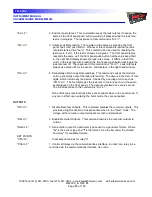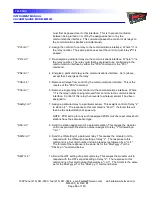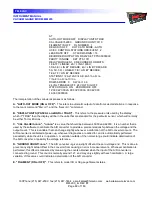
INSTRUMENT MANUAL
VACUUM GAUGE MODEL MM200
160Phone:(215) 947-2500 fax:(215) 947-7464 e-mail:[email protected] web site:www.televac.com
MM-200_im REV M
Page 80 of 160
TELEVAC
range an "S" will be sent. If it is off due for any other reason an "F" will be
sent.
"CA<cr>"
3. Cancel automatic output of data. This command causes the automatic output
of data to cease. It does not "unmark" stations, they stay marked, and if the
"Annn<cr>" command is again given, the output of data from those stations
that had been marked will resume. The response to this command is "A<cr>".
"Mx<cr>"
4. Mark the stations from which the above automatic readings shall be received.
Where x is the number of the station to be "marked" for automatic output
(mark one station at a time). The response to this command is "A<cr>".
"Rx<cr>"
5. Obtain individual vacuum readings from the various sensors. Where x is the
station from which a reading is desired. To read station number 10, R0<cr>
must be sent.
The response to this command, when not in the burst mode, is in the same
format for all types of sensors. That is, the response is in exponential form.
The form is "n=x.xx(+ or -)yu", where "n" is the station number, "x.xx" is the
value given to two decimal places, followed by either a plus or a minus,
followed by the exponent (power of ten), followed by either a "U" for microns
or a "T" for Torr. For example, a Model 2A thermocouple at station #2 might
respond "2=2.45+2U", corresponding to a pressure reading of 245 microns.
Note that station number 10 will be designated by "A=...". This command
should not be used at the same time that the "Annn<cr>" command is being
used, and none of the stations should be marked for automatic output when
this command is used. The units remain Torr or microns regardless of the
units chosen for front panel display.
When in the "burst" mode, the response is the same as given above for the
"BO<cr>". The burst mode cancels automatic output of data for stations.
When in the "Burst" mode, a C/C gauge will give the following responses:
A. If the gauge is active, the output will be four characters. The first is the whole
value digit, followed by an implied decimal point, followed by the next two
significant digits. There is then an implied "-" sign followed by the exponent.
For an exponent of "-10" an "A" is sent. For an exponent of "-11", a "B" is
sent.

